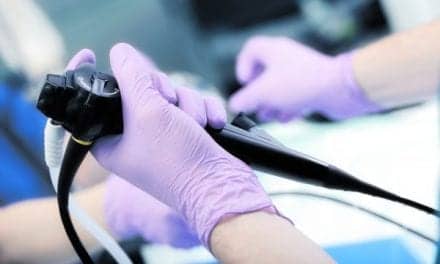By Aine Cryts
Employees at Burlington, Mass.-based Nuance Communications “care deeply about the people we work with every day,” says Brenda Hodge, Executive Vice President, Nuance, which develops conversational artificial intelligence solutions. She notes that this includes Nuance’s employees, its customers, and their patients.
“Given that our customers fall within three of the most critical industries involved in the COVID-19 response—healthcare, telecommunications, and financial services—they depend on us to not only provide them with reliable, innovative technology, but also partnership and support during this trying time. Our product teams are working around the clock to determine what we can provide or quickly innovate to help in this challenging time,” Hodge tells AXIS Imaging News.
How Nuance communicates is just as important, she says: “We believe there are three key characteristics to effective communications: predictability, proactivity, and authenticity. These three characteristics are at the heart of every communication we do at Nuance. We strive to be a trusted partner and want to reach out with predictability and authentic communications that illustrate our preparedness and support for our employees and our customers’ needs worldwide.”
Hodge points out that the company is providing free add-on licenses for one of its products to physicians and nurses. That enables clinicians to “capture the patient story more efficiently and automate high-value clinical tasks using their smartphones as hand-free microphones whenever they deliver care,” she adds.
In addition, radiologists can read diagnostic images on a remote basis and dictate reports from home or other locations, which should support an increased need for telehealth visits, explains Hodge.
AXIS Imaging News recently asked Hodge about Nuance’s approach to communicating with clients about the company’s coronavirus-related business-continuity plans, in addition to ways the company is asking clients how it can help during the pandemic. What follows is a lightly edited version of that conversation.
AXIS Imaging News: What are you telling clients about your business-continuity plans and ways Nuance can help them?
Brenda Hodge: We’re committed to the health and safety of all our employees and their families and our communities, and that’s not just true in today’s climate—it’s woven into our culture at Nuance. Based on guidance from the Centers for Disease Control and Prevention and the World Health Organization, we have strongly encouraged our global teams to work from home and rolled out extensive employee and customer communications that we had planned weeks in advance, in anticipation of this outbreak. We also conducted testing to validate that every single employee had the secure access and tools required to ensure business continuity.
This transition has been possible because we have done so much work over the years to implement robust continuity plans that help us avoid service disruption, even when we’re not facing a public-health emergency. These plans include redundant remote operation centers with support personnel around the globe, redundant remote connectivity for a decentralized workforce, temporary succession planning for those who may be out sick, and disaster recovery capabilities.
At the end of the day, we’re a technology company, and we rely on technology to solve problems and transform business. For our customers, that means listening to what they’re up against and rapidly deploying new innovations to get them what they need. For our team members, that means exploring how our virtual assistant technology and human-assisted machine learning loop can help respond to questions about the coronavirus—and that’s just one example of how we’re leveraging our own technologies to alleviate communication challenges surrounding this outbreak. All of this will help us today and well into the future.
AXIS: How are you communicating with employees and clients?
Hodge: We have pivoted all in-person communications to virtual and video conferencing tools for both internal and external communication. Video conferencing, in particular, lets us mimic the feeling of face-to-face connections while safely communicating and moving business forward. We can share information among ourselves and with our customers as we learn new best practices and uncover new challenges that need solving.
AXIS: How often are you communicating with employees and clients? When did you start?
Hodge: We actually began limiting travel before governance and mandates; we recognized the criticality of what our customers do—and what we were potentially up against—and began preparing early to maintain our communications and connections with customers and employees alike. As the situation evolves, we’ll continue evaluating our plans and responses, adapting where needed, and delivering proactive and predictable communications to keep everyone in the loop.
AXIS: Why are you doing this? Arguably, it takes your teams away from other vital work.
Hodge: Our job is to be there when our customers need us most. Today, that means adapting our style of work—and that is vital. We care deeply about our people, and so our focus is to ensure that our customers and employees are supported during this time. People must have context to work efficiently and productively. It’s an ever-changing environment, but one that we can adapt to together.






